
Lords & Wizards is a fantasy board wargame published by Fantasy Games Unlimited (FGU) in 1977.

Lords & Wizards is a fantasy board wargame published by Fantasy Games Unlimited (FGU) in 1977.
Lords & Wizards is a wargame of world conquest for 2–12 players. [1] Players control leaders who amass armies and magical items in a bid to eliminate their opponents. Leader units advance in levels after gaining experience. [2]
The game box or ziplock bag contains:
A Legend is dealt out to each city and ruin on the map. Each player decides which type of leader to start with, either a Lord or a Wizard, and must also choose an alignment for the leader (Good, Neutral or Chaotic). Each alignment has both a advantages and disadvantages. [2] The starting place for each player is randomly determined, and the player may then discover what Legend belongs to that player's starting city, and whether the Legend may be of use.
Each player uses their leader to search for allies, henchmen, creatures and magic items in order to create the strongest force. A turn represents half a month, and each year consists of nine months. The game ends at the end of the third year (54 turns). Each unit has a movement rating, which can be affected by terrain. Combat is resolved using a standard Combat Result Table (CRT) and a die roll. Magic items that have been gained or bought can be used in combat. Lords gain a level of experience every three months (six turns). A Wizard gains a level after four turns spent studying.
The game can end before its scheduled finish if one player eliminates all the other players. If the game lasts until the end of the third year, the player with the leader who has gained the most levels wins. If two or more leaders are tied for levels gained, the following become the tie-breaker in order of precedence: greatest Gold Talent income, most magical items of the same alignment; most current Gold Talents.
In the mid-1970s, shortly after the publication of Dungeons & Dragons , 16-year-old Adam Gruen designed a fantasy-themed Risk -like game for his friends by borrowing the components from two SPI wargames. He used the isopmorphic maps from Strategy I to produce a never-ending map, and the graphical counters from Dark Ages to represent Tolkienesque elves, dwarves, and monsters. Gruen sold the game to FGU, who published it in both a ziplock bag and as a boxed set in 1977 with cover and interior art by Mike Gilbert. [3]
In Issue 7 of White Dwarf , Fred Hemmings noted that there was a constant shortage of certain types of counters, and found the map was of "an unwieldy size." He also found parts of the rules to be "vague and contradictory," and some of the allies, Legends and magical items unbalanced the game. Hemmings concluded by giving the game a below-average rating of 6 out of 10, stating "it is clear that a lot of work has gone into the game. Given this it seems a pity that the sides are not more evenly balanced." [2]
In the inaugural issue of Ares (March 1980), Greg Costikyan called the game "nothing so much as a fantasy Blitzkrieg ", and noted that "strategic finesse is the major factor in determining the outcome of the game." He didn't like that the counters had no labels on them, meaning "one must infer their nature from the illustration on the counter, which results in frequent reference to the counter summary in the game rules." He concluded by giving the game a below-average rating of 5 out of 9, saying, "Lords & Wizards is a solid, competent design with no great innovation, and some graphics problems." [1]
At the 1978 Origins Awards, Lords & Wizards was a finalist for the Charles S. Roberts Award for "Best Fantasy Board Game of 1977." [3]

White Bear and Red Moon is a fantasy board wargame set in the world of Glorantha, created by Greg Stafford and published in 1975. Stafford first tried to sell the game to established publishers, but despite being accepted by three different game companies, each attempt ended in failure; eventually he founded his own game company in 1974, the influential Chaosium, to produce and market the game.

Divine Right is a fantasy board wargame designed by brothers Glenn A. Rahman and Kenneth Rahman. The game was first published in 1979 by TSR, Inc., and a 25th Anniversary Edition was published in 2002 by The Right Stuf International.
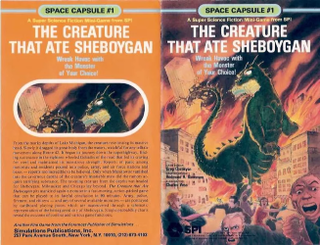
The Creature That Ate Sheboygan is a science fiction board game released in 1979 by Simulations Publications (SPI). The game received good reviews and won an industry award.

Conquistador, originally subtitled "The Age of Exploration: 1495–1600", is a board game published by Simulations Publications, Inc. (SPI) in 1976 that simulates the exploration of the New World in the 16th century. Players take on the role of European countries sending expeditions to find gold and establish colonies. Although the design uses the trappings of board wargames such as a hex map, combat is not a major part of the game.
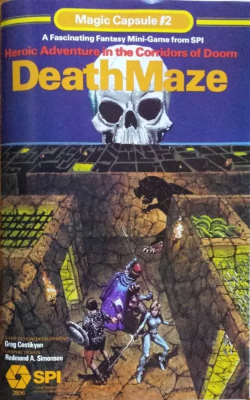
Deathmaze is a fantasy board game published by Simulations Publications (SPI) in January 1980 that falls into the general category of dungeon crawls, more specifically, dungeon games in which players enter a dungeon, massacre the dungeon dwellers and steal their treasures.

WarpWar is a science fiction board wargame published by Metagaming Concepts in 1977 that simulates interstellar combat. It was the fourth in Metagaming's MicroGame series.

Melee is a board wargame designed by Steve Jackson, and released in 1977 by Metagaming Concepts. In 2019, Melee was revived and re-released by Steve Jackson Games.
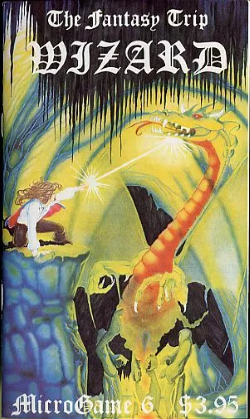
Wizard is a board game system of medieval fantasy magical combat published by Metagaming in 1978 that was designed to complement the previously published Melee, a system of melee combat rules. Forty years later, Wizard was revived and re-released by Steve Jackson Games.

Sorcerer, subtitled "The Game of Magical Conflict", is a fantasy board wargame for 1–5 players published by Simulations Publications, Inc. (SPI) in 1975 that simulates magical combat.

Chitin: I is a science fiction microgame published by Metagaming Concepts in 1977 in which bands of intelligent insects vie for resources.

Swords & Sorcery, subtitled "Quest and Conquest in the Age of Magic", is a fantasy-themed board wargame published by Simulations Publications, Inc. (SPI) in 1978.
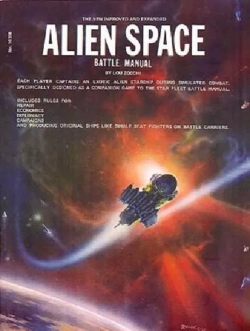
Alien Space is a science fiction board wargame published by Gamescience in 1973 that simulates space combat as seen in the Star Trek television show.
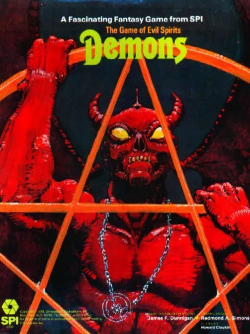
Demons is a board game published by Simulations Publications (SPI) in 1979 in which players control magicians who conjure demons to aid them during a treasure hunt.

Annihilator & OneWorld are two board wargames released in one package by Metagaming Concepts in 1979 as the 14th addition to its MicroGame line.

Colony Delta, subtitled "Earth vs. Sigma Draconix with a Colony World in the Balance", is a science fiction board wargame published by Fantasy Games Unlimited (FGU) in 1979.

Holy War is a science fiction board wargame published by Metagaming Concepts in 1979 in which two groups battle each other inside a pocket universe.

Black Hole is a science fiction board wargame published by Metagaming Concepts in 1978 as part of its MicroGame line.
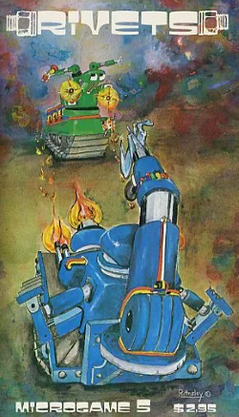
Rivets is a post-apocalyptic board wargame published by Metagaming Concepts in 1977.
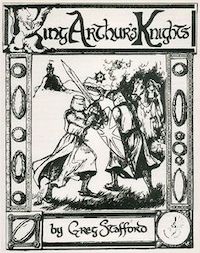
King Arthur's Knights is an Arthurian board game published by Chaosium in 1978 in which knights of the Round Table perform chivalrous quests for artifacts and treasure.
Mertwig's Maze is a fantasy board game for 2–9 players designed and illustrated by Tom Wham and published by TSR in 1988.